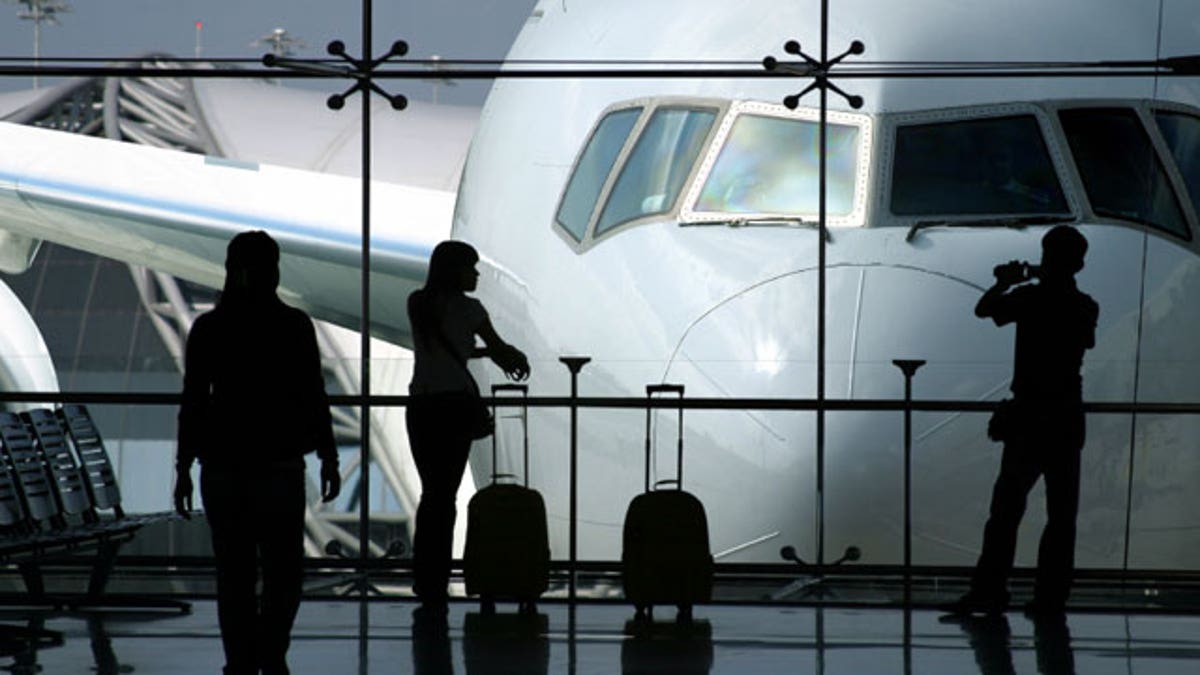
Flying is the still safest way to travel. No, really, it is. Yet despite strong statistics that back flying as the safest mode of transportation, millions of travelers still experience some level of anxiety even just thinking about flying. But what is it that makes us so afraid?
As if the fear of terrorism, turbulence or mechanical failure were not enough, airplane passengers still have to contend with the fear of microbial invasion. After all, airplanes are a genuine hodgepodge of passengers, some healthy, some sick. And it always seems to be your dumb luck that you get seated next to some poor chap who looks like he belongs on the set of the film Outbreak. That's when the fear of infection really sets in.
But is this fear warranted? After all, it's 2011; shouldn't airplane air be sterile by now?
Air filtration
Despite literally millions of passengers being crammed daily in tightly sealed, industrial flying tubes like sardines in a can, research has shown that the risk of infectious disease transmission aboard a plane is very low. In fact, the risk of airborne transmission is probably higher in the departure lounge, where air isn't rigorously filtered.
Today, the quality of aircraft cabin air is carefully controlled. Most modern aircraft recycle about 50 percent of cabin air, with the remaining 50 percent being fresh, outside air. But it wasn't always this way. Partly to account for cigarette smoke, older systems actually used 100 percent fresh air, compressed, humidified and cooled by the engines in a process that consumed significant energy. To conserve fuel and decrease engine workload, less fresh air is now used, and instead, about half the cabin air is recycled after it is filtered through HEPA (high-efficiency particulate air) filters like those used in hospitals to trap dust particles, bacteria, fungi, and viruses.
But these filters aren't exactly perfect (each air exchange is said to remove only about 63 percent of airborne pathogens). And they're not exactly mandatory.
As many as 15 percent of U.S. commercial airlines that carry more than 100 passengers lack HEPA filters. And there are currently no standards or regulations that enforce filtration. Even though cabin air is exchanged through the system about 20 to 30 times per hour, there remains a risk, albeit minor, of airborne disease transmission. But who exactly is at risk of infection? And what are they at risk of catching?
Risk of transmission
Generally speaking, your risk of airborne disease transmission depends on how close you're seated to an infected individual. A safe distance of at least two rows during an eight-hour flight was traditionally assumed sufficient, but this estimate came from studies on the spread of tuberculosis, a contagious bacterial infection of the lower lungs. When a single passenger with severe acute respiratory syndrome (SARS), a viral respiratory infection, infected 22 fellow passengers on a flight from Hong Kong to Beijing back in 2003, researchers realized that passengers as far away as seven rows were at risk.While increasing ventilation can help to decrease the risk of airborne transmission to nearby passengers, the greater risk of infection comes not necessarily from the air, but from direct contact. Diseases like influenza, for example, are more likely to be contracted when someone coughs or sneezes directly on or near you or when you touch an infected surface and then touch an entry pathway on the body, like the eyes or mouth. In many respects, then, airplanes are not much different than other forms of public transportation, like buses or trains. Washing your hands and avoiding touching your face will therefore help to further prevent disease above and beyond proper air filtration.
___________________________________________________________________________________________________________________
More From AskMen:
Top 10: Travel Tips From Shane Smith
___________________________________________________________________________________________________________________
High-priority diseases
According to the European Center for Disease Control (ECDC), the diseases most relevant for transmission during flight, not including food-borne diseases or diseases spread by insects or other invertebrate species, and ranked according to priority are as follows:
• Tuberculosis
• SARS
• Influenza, including avian influenza
• Measles
• Rubella
• Meningococcal disease
• Diphtheria
• Ebola hemorrhagic fever
• Marburg hemorrhagic fever
• Lassa fever
• Smallpox
• Anthrax
Yep, even the deadly ebola virus makes the list! Although there has yet to be a documented case of transmission, there have been several scares -- like back in 2006, when a UK woman died of the disease shortly after boarding a flight from Johannesburg. Fortunately there have been few documented outbreaks aboard airplanes leading to serious disease or death. There hasn't even been a documented outbreak of influenza aboard an airplane since 1999. That said, the potential for disaster remains. Probably the worst outbreak of illness documented traces back to Sweden in 1963, when an individual picked up smallpox aboard an airplane and later transmitted the disease to 24 individuals, eventually resulting in four deaths.
Landing the issue
With over 9 billion passengers a year expected to fly by 2025, the issue of disease transmission aboard airplanes is unlikely to park itself any time soon. Fortunately, due to improvements in filtration technology and keen infection control practices, the risk of acquiring a disease aboard a plane is low and falling -- unless, of course, some new, deadlier pathogen rears its ugly head. But until one does, don't be afraid to fly. Bon voyage!
